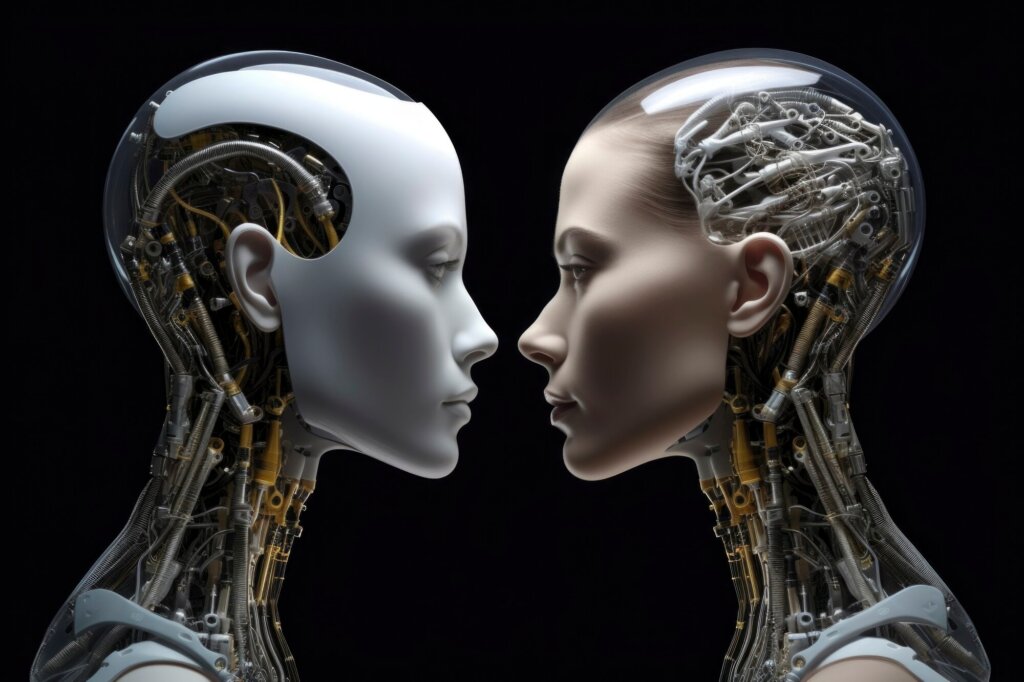Artificial Intelligence (AI) has become an essential part of modern life, helping us solve problems, automate tasks, and improve efficiency. But have you ever wondered about the types of AI agents that make all of this possible? In this article, we’ll explore the different types of AI agents, their roles, and how they work. Whether you’re new to AI or looking to deepen your knowledge, this guide will break it all down for you.
Table of Contents
What Are AI Agents?
Before diving into the types of AI agents, let’s first understand what AI agents are. An AI agent is a computer program that can perceive its environment, make decisions, and take actions to achieve specific goals. These agents use sensors to gather information, decision-making models to analyze it, and actuators to act on their decisions. Essentially, they are the building blocks of AI systems that help machines perform intelligent tasks.
AI agents can vary greatly in complexity. Some are simple programs designed to follow a set of predefined rules, while others use advanced machine learning algorithms to adapt and improve over time. The common factor is their ability to perform tasks that would normally require human intelligence, from recognizing speech to solving complex problems.

What are the types of AI Agents
AI agents come in several forms, each designed for specific tasks. Here are the primary types of AI agents:
1. Simple Reflex Agents
Simple reflex agents are the most basic type of AI agents. They make decisions based solely on the current situation and predefined rules, without considering past experiences or future consequences. These agents are like if-then systems: if a specific condition is detected, the agent performs a corresponding action.
Example:
- A thermostat adjusts the temperature based on the current room temperature.
Advantages:
- Easy to design and implement.
- Works well in predictable environments.
Limitations:
- Can’t handle complex or changing environments.
- Lacks memory and adaptability.
Simple reflex agents are ideal for straightforward tasks where the environment is stable and predictable. However, they struggle with anything that requires reasoning or adaptability.
2. Model-Based Agents
Unlike simple reflex agents, model-based agents have a representation or model of their environment. This allows them to keep track of changes and make decisions based on both current and past information. These agents can handle more dynamic and uncertain environments.
Example:
- A robot vacuum that maps your home and adjusts its cleaning path accordingly.
Advantages:
- Handles complex environments better.
- Can adapt to changes in its surroundings.
Limitations:
- More computationally intensive than simple reflex agents.
Model-based agents are commonly used in robotics and other fields where adaptability is crucial. They offer a significant step up in complexity and capability compared to simple reflex agents.
3. Goal-Based Agents
Goal-based agents are designed to achieve specific objectives. They evaluate various actions and choose the one that brings them closer to their goal. These agents require reasoning capabilities to predict the outcomes of their actions.
Example:
- A self-driving car navigating to a destination while avoiding obstacles.
Advantages:
- Can make more informed decisions.
- Flexible in achieving goals in different environments.
Limitations:
- Requires advanced reasoning capabilities.
- More complex to develop.
Goal-based agents are versatile and can handle a wide range of tasks. Their ability to plan and reason makes them highly effective in dynamic and unpredictable environments.
4. Utility-Based Agents
Utility-based agents go a step further than goal-based agents by evaluating multiple actions and selecting the one that maximizes a specific utility or satisfaction measure. These agents are ideal for scenarios where there are multiple ways to achieve a goal, but some are better than others.
Example:
- An e-commerce recommendation system suggesting the best products based on customer preferences.
Advantages:
- Makes optimal decisions.
- Offers greater flexibility and precision.
Limitations:
- More computationally demanding.
- Requires a well-defined utility function.
Utility-based agents are particularly useful in decision-making scenarios where trade-offs need to be considered. They ensure that the chosen action delivers the best possible outcome.
5. Learning Agents
Learning agents are the most advanced type of AI agents. They use machine learning algorithms to improve their performance over time. These agents can analyze past actions, learn from their successes and failures, and adapt to new situations without explicit reprogramming.
Example:
- Virtual assistants like Siri or Alexa that get better at understanding user commands over time.
Advantages:
- Continuously improves performance.
- Can handle highly dynamic environments.
Limitations:
- Requires large amounts of data to learn effectively.
- Complex to build and maintain.
Learning agents are at the forefront of AI research and development. Their ability to learn and adapt makes them suitable for highly complex and unpredictable tasks.
Applications of Different Types of AI Agents
1. Healthcare
- Simple reflex agents are used in monitoring devices like heart rate trackers.
- Learning agents assist in diagnosing diseases and recommending treatments.
2. Transportation
- Goal-based agents power self-driving cars to navigate and avoid obstacles.
- Utility-based agents optimize delivery routes for logistics companies.
3. Customer Support
- Chatbots, often learning agents, answer customer queries and provide assistance in real-time.
4. Finance
- Model-based agents analyze stock market data to predict trends.
- Learning agents detect fraudulent transactions and provide financial advice.
5. E-Commerce
- Utility-based agents recommend products based on user preferences.
These applications showcase the versatility of AI agents and their potential to transform industries. By leveraging the strengths of different types of agents, organizations can solve complex problems and deliver better results.
Benefits of Understanding Types of AI Agents
Knowing the types of AI agents helps us appreciate their role in improving efficiency and solving problems. Here are some benefits:
- Improved Decision-Making: Different agents suit different tasks, making it easier to choose the right one.
- Cost Savings: Automating processes with AI agents reduces manual effort and expenses.
- Scalability: AI agents can handle large-scale tasks without compromising quality.
- Personalization: Advanced agents create customized experiences, like tailored product recommendations.
- Adaptability: Certain agents can learn and improve, making them invaluable in changing environments.
Challenges and Limitations of AI Agents
While AI agents are powerful, they come with challenges:
- Data Dependency: Most AI agents need large amounts of data to function effectively.
- Complex Development: Building and maintaining advanced agents requires expertise.
- Ethical Concerns: Issues like bias, privacy, and transparency must be addressed.
- High Costs: Developing and deploying AI systems can be expensive.
- Integration Issues: Incorporating AI agents into existing systems can be time-consuming and resource-intensive.
The Future of AI Agents
The future of AI agents looks promising as technology continues to evolve. Here are some trends to watch:
- More Advanced Learning: AI agents will become better at learning from smaller datasets and adapting faster.
- Human-AI Collaboration: Agents will work more closely with humans to enhance creativity and productivity.
- Increased Autonomy: AI agents will perform complex tasks with minimal human intervention.
- Ethical AI: More focus will be placed on creating fair and transparent AI systems.
- Smarter Interactions: AI agents will communicate and interact in ways that feel more natural and intuitive to users.
Conclusion
In summary, understanding the types of AI agents is essential to grasp how AI works and its potential. From simple reflex agents to advanced learning agents, each type serves a unique purpose in making our lives easier and more efficient. Whether it’s automating tasks, providing personalized experiences, or solving complex problems, AI agents are paving the way for a smarter future.
As we continue to explore and develop AI technology, the possibilities for AI agents are limitless. By knowing the strengths and weaknesses of each type, we can harness their potential to create a better world. With advancements in AI, we can look forward to even more innovative applications and benefits in the years to come.
